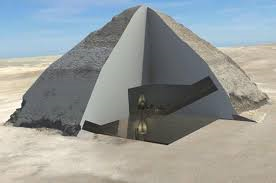
Breaking News
 The DOJ Officially Closed Its Investigation into Pfizer Bribery…More…
The DOJ Officially Closed Its Investigation into Pfizer Bribery…More…
The Ironies of Fooling Ourselves with Catastrophic Climate Destabilization
 At Least 10 Children Killed by Israeli Drones While Waiting Outside Clinic for Medical Aid and Food
At Least 10 Children Killed by Israeli Drones While Waiting Outside Clinic for Medical Aid and Food
 IRS Gives Churches Blessing to Endorse Candidates
IRS Gives Churches Blessing to Endorse Candidates
Top Tech News
Magic mushrooms may hold the secret to longevity: Psilocybin extends lifespan by 57%...
 Unitree G1 vs Boston Dynamics Atlas vs Optimus Gen 2 Robot– Who Wins?
Unitree G1 vs Boston Dynamics Atlas vs Optimus Gen 2 Robot– Who Wins?
 LFP Battery Fire Safety: What You NEED to Know
LFP Battery Fire Safety: What You NEED to Know
 Final Summer Solar Panel Test: Bifacial Optimization. Save Money w/ These Results!
Final Summer Solar Panel Test: Bifacial Optimization. Save Money w/ These Results!
 MEDICAL MIRACLE IN JAPAN: Paralyzed Man Stands Again After Revolutionary Stem Cell Treatment!
MEDICAL MIRACLE IN JAPAN: Paralyzed Man Stands Again After Revolutionary Stem Cell Treatment!
 Insulator Becomes Conducting Semiconductor And Could Make Superelastic Silicone Solar Panels
Insulator Becomes Conducting Semiconductor And Could Make Superelastic Silicone Solar Panels
 Slate Truck's Under $20,000 Price Tag Just Became A Political Casualty
Slate Truck's Under $20,000 Price Tag Just Became A Political Casualty
 Wisdom Teeth Contain Unique Stem Cell That Can Form Cartilage, Neurons, and Heart Tissue
Wisdom Teeth Contain Unique Stem Cell That Can Form Cartilage, Neurons, and Heart Tissue
 Hay fever breakthrough: 'Molecular shield' blocks allergy trigger at the site
Hay fever breakthrough: 'Molecular shield' blocks allergy trigger at the site
After 4,600 years, we can finally see deep inside Egypt's mysterious pyramids

The pyramids of ancient Egypt are about 4,500 years old. They have stood the test of time, great monuments on the landscape. Dusty gold and majestic.
Now we can learn a little more about them thanks to cosmic rays. Archaeologists have begun to use new technology to better refine our understanding of pyramids' internal makeup.
The new Scans Pyramids project uses cosmic rays to build "inside" maps of the Egyptian attractions. The images show the internal crooked chamber of a 4,600-year-old pyramid known as the Bent Pyramid. It's a 345-foot monument 25 miles south of Cairo.
In ancient times, the pointed building was known as the Southern Shining Pyramid. It is believed to be one of Egypt's earliest designs. It looks odd, probably built in a time of transition, when engineering moved from stepped pyramids to smooth.

 AI Getting Better at Medical Diagnosis
AI Getting Better at Medical Diagnosis

